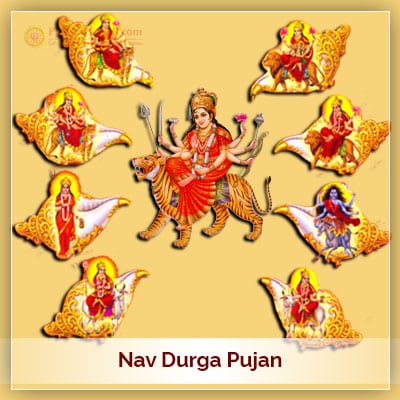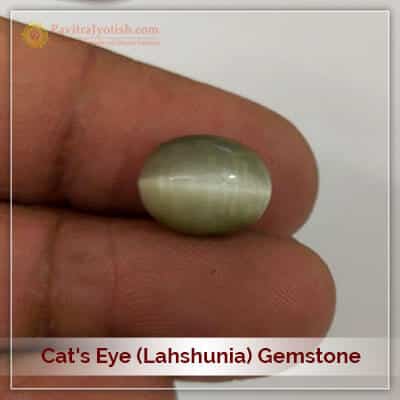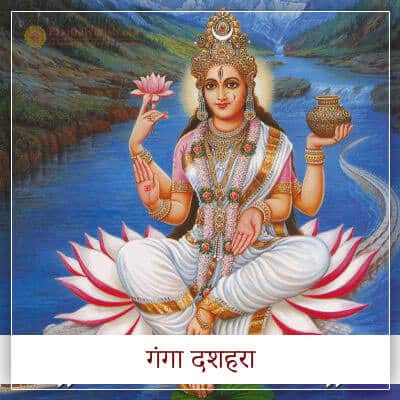Navratri Festival Means Nav Durga Pujan From 9 April 2024 to 17 April 2024
Published On : March 1, 2018 | Author : Astrologer Pt Umesh Chandra Pant 
Know Navratri Festival And Its Significant Details
Durga Pooja – The Source of Invincible Energy
Chaitra Navratri From From 9 April to 17 April 2024
|| Om Namashchandikayai ||
Land of India is not just limited to a great and sacred culture but it is also a holy hand of gods where many incarnations of the divine have manifested. There are many Puranic stories related to these incarnations. The whole universe, including the sun, stars, planets, constellations and five elements is governed mysteriously by the Supreme Being. It is an eternal truth that nothing possible without the supreme energy (para-brahma). Even though many people in today’s technology era are trying to force their views on to others about the non-existence of gods and deities, but the truth is they certainly realize the divine power in a way or other. Hinduism is also known as “Sanatana Dharma” which means eternal religion since time immemorial. There is a lot of knowledge about the whole universe, its origin, and expansion. Our Vedas and Puranas are a witness of the fact that whenever there is a harm to the religion and empowerment of demonic forces like misconduct and crime; god incarnates in various formnavras to free the world from demonic powers and save the people of truth and devotion. These incarnations re-establishes the dharma. Book Nav Durga Pujan from our website.
Similarly, when the entire earth and heavens were the victims of demons like Mahishasura, then all the gods gathered and with the inspiration of God Almighty, they projected their energy into a single form and granted it various weapons and superpowers and made it invincible and auspicious. She is known by the name Adi Shakti, Maa Jagadamba, Durga or Amba in the whole world. Mother Durga is not only the protector of this world but also the giver of boons. The divine tales of Shiva and Shakti are narrated in a captivating manner in the Devi Bhagvata, and other puranas like Surya, Shiva, Srimad Bhagvatam etc. Without the power of Shakti, not a particle of the universe can move. Even the supreme witness Shiva (devoid of vowel “ee”) is like a corpse without the Shakti. Goddess Shakti incarnated on nine days in different forms like Jayanti, Mangala, Kali, Bhadrakaali, kapalini, Durga, Kshama, Shivaa, Dhaatri, Swaaha, Swadha etc. and slayed the great demons like Shumbh-nishubha, Mahishasura, Raktabeeja etc. She helped the pupil of this world by removing their misery and helped in reestablishing the dharma.
Our ancient seers who were the well-wishers for the entire humanity have provided us with the appropriate methods of worshiping the goddess. Sage Medha advised King Suratha to worship and take refuge in Goddess Durga who is the giver of prosperity, heavens, and liberation. By following this advice King achieved never-ending kingdom and fame. Since the time when goddess Durga took the form from the energies of various devatas, several people have devoted their lives and got great boons and grace from the goddess. What to talk of humans when even the celestial deities are themselves engaged in the worship of Shakti. Even Lord Rama himself worshiped goddess Durga during the Navratri to get victory over Ravana. In the whole of India, the energy of the goddess is celebrated during Ashwin Shukla pratipada and Ashwina Shukla pratipada every year in a grand manner. These are also known as Vasanta and Shaaradiya Navaratra. Apart from these, there are two other lesser known Navaratris which are celebrated by a fewer number of people. These are four major festivals for goddess Durga. The beginning of Vasanta (spring) season is a celebration for the agriculture-dominated nation like India. During these days, the crop of wheat is sown and on the other hand, the crops of paddy give hints of harvesting which brings an elated feeling to the farmers and to the whole of the country. On this auspicious occasion, the whole of the country worships goddess Durga with Vedic methods for nine days. This is the reason why it is called as “Navaratri”. As a result of the worship of goddess Durga, people get rid of sorrow, obstacles, poverty, and diseases and obtains the desired results as a blessing.
Like every year, the beginning of Navaratra and Kalashasthapana is Vikrami Samvat 2080, Tuesday, (9 April 2024). “Durga Saptashati” is the most authentic and most popular scripture for the puja of the divine goddess. The glory of the divine goddess is sung in this scripture in a total of 700 verses. Just by the faithful recitation of Durga Saptashati, people can get the grace of mother Durga instantly. For those who are not capable of chanting the elaborate 700 verses or for those who do not have time to do elaborate recitation; a short recitation of “Saptashaloki Durga” is also good enough to get the desired fulfilled. In this article, you can know about the nine divine forms of the goddess and its brief introduction and puja, articles for puja, havan , making of havan kunda, material for the havan and concise information on many aspects related to the goddess and this festival. By following these methods, you can perform authentic puja to the goddess as per the agama and Vedas. The sequence of Navaratri this year is as follows:
First day:
First Navratra, Vikram Samvat 2080, Vasant Ritu, Ashwin month, 9 April 2024, Tithi: Shukla Paksha Pratipada, Day: Tuesday. The muhurta for Kalasha Sthapana and Pooja is 06:02 AM to 10:16 AM (Total Subh Muhurta Time 4 Hours 14 Minutes) and during the Abhijeet muhurta in the afternoon at 11:57 am to 12:48 PM. The goddess of the first day is Goddess Shailaputri (As Per Pratipada Tithi)
Second day:
Second Navratra, 10 April 2024, Tithi: Shukla Paksha Dwitiya, Day: Wednesday, The goddess of the second day is Goddess Brahmacharini (As Per Dwitiya Tithi)
Third day:
Third Navratra, 11 April 2024, Tithi: Shukla Paksha Tritiya, Day: Thursday, The goddess of the third day is Goddess Chandraghanta (As Per Tritiya Tithi)
Fourth day:
Fourth Navratra, 12 April 2024 Tithi: Shukla Paksha Chaturthi, Day: Friday, The goddess of the fourth day is Goddess Kushmanda (As Per Chaturthi Tithi)
Fifth day:
Fifth Navratra, 13 April 2024, Tithi: Tithi: Shukla Paksha Panchami, Day: Saturday, The goddess of the Fifth day is Goddess Skandamata (As Per Panchami Tithi)
Sixth day:
Sixth Navratra, 14 April 2024, Tithi: Shukla Paksha Shashthi, Day: Sunday, The goddess of the sixth day is Goddess Kaatyayani (As Per Shashthi Tithi)
Seventh day:
Seventh Navratra, 15 April 2024, Tithi: Shukla Paksha Saptami Day: Monday, The goddess of the seventh day is Goddess Kaalaratri (As Per Saptami Tithi).
Eighth day:
Eighth Navratra, 16 April 2024, Tithi: Shukla Paksha Ashtami Day: Tuesday, The goddess of the eighth day is Goddess Mahagauri (As Per Ashtami Tithi)
Ninth Day:
Ninth Navratra 17 April 2024, Tithi: Shukla Paksha Saptami Day: Wednesday, The goddess of the Nineth day is Goddess Siddhidaati (As Per Navami Tithi)..
The importance of Kanya poojan in Navratri
From the first day of Navratri to the ninth day, one should worship the goddess and related deities with shodasha upachara method with faith and devotion. Distribute the Prasad after the puja is over and worship nine girls by considering them the divine image of the goddess herself. Along with that, serve them with delicacies, sweets, and savories. Also, worship one male child along with them. Gift them with beautiful garments, stationery, and money etc. If you are observing a vrata, it should be observed until the ninth day.
Nine divine forms of Goddess Jagadamba
प्रथमं शैलपुत्री च द्वितीयं ब्रह्मचारिणी। तृतीयं चन्द्रघण्टेति कूष्माण्डेति चतुर्थकम्।।
पंचमं स्कन्दमातेति षष्ठं कात्यायनीति च। सप्तमं कालरात्रि महागौरीति चाष्टमम्।।
नवमं सिद्धिदात्री च नवदुर्गाः प्रकीर्तिताः। उक्तान्येतानि नामानि ब्रह्मणैव महात्मना।।
prathamam Shailaputree cha dviteeyam brahmachaarinee |
truteeyam chandraghanteti kooshmaandeti chaturthakam ||
panchamam skandamaateti Shashtham kaatyaayaneeti cha |
saptamam kaalaraatreeti mahaagaureeti chaashtamam ||
navamam siddhidaatree cha navadurgaah prakeertitaah |
uktaanyetaani naamaani brahmanaiva mahaatmanaa ||
The first form of mother Jagadamba is known as Shaila-Putri, who incarnated in the family of king Himalaya and hence she is known by the name “shailaputri”. The vehicle of the goddess is a white bull. She holds trishula in the right and a lotus in the left hand respectively. Stories related to this goddess are very interesting, they are generally found in Devi Bhagvata and other texts.
The second form of mother Jagadamba is known as Brahmacharini. She did divine penance and killed many groups of demons with her powers, she always blesses her devotees with abundance. She is the embodiment of graciousness and compassion. She held a rosary in the right and a kamandalu in the left hand.
The third form of mother Jagadamba is known as Chandraghanta. She blesses the devotees with fearlessness and is very kind to the sadhakas. She upholds the religion by destroying the asuras and rakshasas. On her forehead, there is a mark of the crescent moon which is like a gong hence she is known as “Chandra-ghanta” throughout the world. She has ten arms and hold various weapons in the hands and is riding a lion. Great demons also fear from the terrifying sounds of the ghanta (giant gong).
The fourth form of mother Jagadamba is known as Kooshmaanda. She has four arms and holds kamandalu, bow, arrow, lotus, flower, nectar (in a pitcher), chakra, gadaa in her hands for the welfare of the beings. She rides a lion. She saves the devotees from enemies, diseases, sorrow, and fear with her grace.
The fifth form of mother Jagadamba is known as Skanda-Mata. She is the mother of Lord Skanda himself. She is holding the child skanda in the right bottom on to her lap. She also holds lotus flower, boon gesture, and blesses her devotees with prosperity and fulfillment of their desires.
The sixth form of mother Jagadamba is popularly known as Kaatyayani. She is the slayer of demon Mahishasura. She has emerged from the divine light of tridevas (brahma, Vishnu, Mahesh). Ever effulgent, the worship of the goddess was first done by sage Katyaayana. Hence she is known by the name of her great devotee as “kaatyaayani”. She has four arms, she holds gesture of fearlessness, a gesture of blessing, sword, and lotus flowers in her hands. The lion is her vehicle and she bestows her devotees with materialistic gains, wealth, spirituality, and moksha.
The seventh form of mother Jagadamba is popularly known as Kaal-Raatri. For the welfare of human beings, she emerged in the terrifying form of kalaratri. The divine goddess has three eyes and four arms her appearance is very intense and ferocious. She is very dark in complexion. She exhales intense flames of fire from her nostrils. She rides a mule. Her worship is believed to be the dispeller of all sorrows and obstacles. She blesses her children with peace and harmony.
The eighth form of mother Jagadamba is popularly known as Maha-Gauri. She has a very fair complexion like that of a white flower or the moon. Because of this reason, she is called as “mahagauri”. She has four arms and her vehicle is a bull. She holds gesture of fearlessness, the gesture of blessing, trishula, and damaruin her four hands respectively. She got lord Shiva himself as her better half with her great and intense penance. With her worship, the devotees instantly attract prosperity and their desires get fulfilled.
The ninth form of mother Jagadamba is well known as Siddhidatri. She is the giver of all the siddhis (divine powers). She is seated on the lotus altar and her vehicle is a lion. She holds chakra, gadaa, conch, and a lotus in her hands. She grants success to her devotees in all the areas of life. She dispels ignorance and obstacles of the devotees.
The benefits and significance of authentic Durga path: Those who perform the complete rituals of Durga pooja as per the Vedic methods by a learned priest every year; dispels darkness from his life and from his house. He gets rid of ignorance, poverty, and poisons like (opium, datura, snake venom, scorpion venom etc.). One is freed from the negative effects of mantra-yantra (done by others), kuladevi-devata dosha. He also gets rid of doshas related todakini, shakini, planets, spirits, ghosts, demons, higher demons, thieves, robbers, fire accidents, and from the enemies. If there are any problems with the spouse or progeny, they also get cured. All the obstacles and negativities are removed. Prosperity prevails in the livelihood and one gets rid of all the obstacles related to the children’s marriage. All the disease are cured and one gets all the desires fulfilled with the grace of the goddess.
A brief and simple method for Navaratri Pooja: In the worship of Goddess Durga, prime importance is given to purity, chastity, and celibacy. For the puja, one should not do the Kalashasthapana during rahu kaal or in the yamaghanta kaala. One should decorate the house or puja section with fragrant flowers and variety of leaves for all the nine days. One should establish sarvathobhadra, swastika, navagraha mandalas as per the procedure of the shastras. All the deities of the established idols and mandalas should be invocated with the respective mantras and venerated with Shodashaupachara poojan.
There is also a tradition of keeping the lamp burning for all the nine days hence devotees should prepare for the same accordingly. Deepak is the witness of our poojas and hence is the symbol of god almighty. One should use desi cow ghee for the akhanda deepa. There is a custom of placing the uninterrupted lamp on the agni kona of the Sarvatobhadra mandala.
Procedure for the Vrata (fasting)
Every year, devotees observe austerities during the festival of Navaratri. There are traditions of observing the vratas on the first day, last day, or for the whole nine days. It is best to use pure and vegetarian products during the vrata. People observing vrata should never consume tamasika items like onions, garlic, non-vegetarian food etc. When the vrata is completed on the last day, there is a custom of worshiping nine small girls which are considered as goddess themselves. Hence, one should serve them with food and gifts as per the capacity and bow down to them with faith and devotion.
Eatables during the Navarathri Vrata
Potatoes, flour or water caltrop, desi ghee, fruits like mango, bananas, oranges, apples, grapes and dry fruits like cashews, almonds, raisins, etc. should be consumed. Apart from these, do not consume items like besan laddu and dishes made from grains during the vrata period.
Do not do these things during Navarathri
It is strongly advised to abstain from consuming products like carbonated drinks, artificially flavored chocolate, garlic, onions, excess salt, meat, spice, chilly, liquor, cigarette, tobacco, and all other tamasika items. These are to be avoided because consuming them could break your vrata. Apart from these, one should try not to indulge in anger, stress, laziness etc. during the vrata. Try to avoid using strongly scented soaps and shaving, haircut etc.
The importance of colors in Navaratri
Colors can have an effect on our minds and energy levels in an intense manner. Hence, devotees should try to use the specific colored garments on various days of the festival. For instance, it is believed that white or red clothes are auspicious on the first day. On the second day, peach, light yellow, saffron etc. are considered favorable. On the third day red and on the fourth day, white, blue is preferred. On the fifth day red and white are better and on the sixth day, green, red, and white are to be used. Seventh-day corresponds to red and blue, the eighth day has red, yellow, pink, and white shades respectively. On the final day, white and red colors are recommended and considered as auspicious.
A brief description of Puja articles (samagri)
Roli 250 gm. Mauli -11, pure desi cow ghee, panchmeva (five types of dry fruits), panchapartra, kalasha (made of gold, silver, copper or clay which should not have any defects), a lamp which burns constantly, sacred thread, betel nut, betel leaves, clove, cardamom, green coconut, dry coconut, rice, dried coconut fruit, desi sugar, incense,agarbatti, saffron, make up items, saree, milk, yogurt, honey, colors (red, yellow, green, etc.), 5 types of gems, five types of leaves, red flowers, ashtagandha, camphor, barley, black sesame, cotton, sweets, 5 meter red and white clothes, five types of fruits, five clothes for the brahmins along with vessels of gold, silver, copper etc. The soil of river for sowing the Bayley. An Aasana for sitting (which should not have cloth) it should be made of wool, or deerskin etc.
Note: The materials for fire ritual (havan) should be collected about two days in advance.
Prohibition: Tulasi leaves should not be offered to Lord Ganesha and Durva grass should not be used during Durga puja.
The beginning of the Pooja:
In the morning after retiring from the household chorus, wear clean clothes for the pooja and take the above-mentioned pooja materials. Keep the Durga Saptashati book on the altar and sit on a clean aasanfacing the east or north direction. Apply sandalwood paste to the forehead. Perform achamana and pavitrikarana by chanting the respective mantras. Then take some water in the right hand and perform the Sankalpa for the pooja.
For fulfilling every desire:
dehi saubhaagyamaarogyam dehi me paramam sukham| rupam dehi jayam dehi yasho dehi dvisho jahi||
If your marriage is getting delayed then chant this mantra along with the pooja:
patnim manoramaam dehi manovrittanusaarinim| taarinim durgasansarasaagarasya kulodbhavaam|
To get rid of various diseases:
roganasheshanapahansi tushta rushta tu kaamaan sakalanabhishtan| tvaamashritaanaam na vipannaraanam tvamashrita hyashrayatam prayanti||
Procedure for Shodashopachara Poojan:
Sip small quantity of water three times with the following mantras,
Om keshavaaya namah, Om narayanaya namah, Om madhavaaya namah, and wash the hands with the mantra Om hrishikeshaaya namah.
Mantra for aasana:
Om prithvi tvaya dhrita loka devi tvam vishnuna dhrita| tvam cha dhaaraya mam devi pavitram kuru chaasanam||
Mantra for purification:
Om apavitrah pavitro vaa sarvaavasthaangato’pi vaa| Yah Smaret-Pundarikaakssam Sa Baahya-Abhyantarah Shucih ||
Mantra for applying sandalwood paste:
Om aadityaa vasavo rudra vishvedevaa marudganaah| tilakam te prayachchhantu dharmakamartha siddhaye||
Thread for protection: (to be tied on left hand of women and right hand of men)
Om yenabaddhobali raja daanavendro mahaabalah| tenatvaamanubadhnami rakshe maachala maachala | |
Mantra for kindling the lamp:
Om jyotistvam devi lokaanaam tamaso haarini tvayaa| panthaah buddhishcha dyotetam mamaitau tamasavritau||
Procedure for Sankalpa:
Om vishnurvishnurvishnuh, Om namah paramatmane, shripurana-purushottamasya shrivishnorajnaya pravartamanasyadya shribrahmano dvitiyaparadrdhe shri shvetavarahakalpe vaivasvatamanvantare- ashtavinshatitame kaliyuge prathamacharane jambudvipe bharatavarshe ………………..shruti smriti puranokta-phalapraptikamah amukagotrotpannah amukasharma aham mamatmanah saputrastribandhavasya shrinavadurganugrahato………………..
The above mantra is chanted in a correct way and one should take the Sankalpa as per the scriptural method.
After the Sankalpa, one must first worship Lord Ganesha by meditating on him, invoking him and performing pooja to him.
Shree Ganesha Mantra:
Om vakratunda mahakaya suryakoti samaprabha| nirvighnam kuru me deva sarvakaryeshu sarvada||
Provisions for Kalasha Sthapana:
For the pooja, one should use the kalasha made of gold, silver, copper etc. if one is incapable then earthen pot can also be used. These clay pots should be well made and should be red in color. They should not have any crakes or defects. It should be washed with clean water first and then filled with Gangajal or pure water. On the pooja alter, spread some soil and sow wheat or barley. Then place the kalasha (pitcher) above it along with the chanting of related mantras. The kalasha should be adorned with perfume, silken cloth, and five leaves. Then add flowers, turmeric, herbs, and uncooked rice in the water of Kalaska. Above the kalasha, place a small pot filled with rice and it should be closed with a coconut. Mentally invoke all the sacred waters of rivers into this kalasha.
Muhurta for Kalasha Sthapana: (collocation of pot)
9th April 2024, Vikrami Samvat, Tuesday, Ashwin Shukla paksha Pratipada is the day for the kalasha sthapana. The time during which the sthapana should be done is after 06:02. It should be done between 11:57 am to 12:48 pm which is auspicious Abhijeet muhurta.
Invocation Mantra: (for Kalasha)
Om kalashasya mukhe vishnuh kanthe rudrah samashritah| muletvasya sthito brahma madhye matriganah snritah||
gange cha yamune chaiva godavari sarasvati | narmade sindhu kaverijale’smin sannidhim kuru ||
Shodasha Upachara Poojan Vidhi (procedure): 
(1) Asana (Flowers etc.):
Om anekaratna-sanyuktam nanamanisamanvitam| katrtasvaramayam divyamasanam pratigrihyatam||
(2) Padyam (Water for washing feet):
Om tirthodakam nirmala’cha sarvasaugandhyasanyutam| paada-prakshalanarthaya dattam te pratigrihyatam||
(3) Aghrya (water mixed with flowers and fragrance):
Om gandha-pushpaakshatairyuktam adhryansammapaaditam maya| grihnaatvetatprasadena anugrihnatunirbharam||
(4) Achamana (scented drinking water):
Om karpurena sugandhena vasitam svaadu shitalam| toyamachamanayedam piyusha sadrisham piba||
(5) Snanam (water mixed with sandalwood):
Om mandaakinyaah samaanitaih karpuraagaruvaasitaih| payobhirnirmalairebhih divyahkaayo hi shodhyatam||
(6) Vastra (garments):
Om sarvaabhushadhike saunye lokalajjaanivaarane| mayaa sampadite tubhyam grihyetam vaasasi shubhe||
(7) Abhushana (ornaments):
Om alankaaraan mahaadivyan naanaaratnairvinirmitan| dharayaitaan svakiye’smin sharire divyatejasi||
(8) Gandha (fragrance):
Om shrikaram chandanam divyam gandhaadhyam sumanoharam| vapushe suphalam hyetat shitalam pratigrihyataam||
(9) Pushpa (flowers):
Om malyaadini sugandhini malatyadini bhakttitah| maya’hritani pushpaani padayorarpitani te||
(10) Dhupa (incense):
Om vanaspatirasodbhutah sugandhih ghranatarpanah| sarvairdevaih shlaghito’yam sudhupah pratigrihyataam||
(11) Deepa (desi ghee lamp):
Om sajyah suvartisanyukto vahnina dyotito mayaa| grihyatam dipakohyesha trailokya-timirapahah||
(12) Naivedya (eatables):
Om sharkaraa khandakhadyani dadhi-kshira ghritani cha| rasanaa karshanaanyetat naivedyam pratigrihyataam||
(13) Achamana (water):
Om gangajalam samanitam suvarnakalashasthitam| susvaadu pavanam hyetadachama mukha-shuddhaye||
(14) Dakshina and Tamboola (betel leaf and money):
Om lavangailadi-sanyuktam taambulam dakshinam tatha| patra-pushpasvarupam hi grihananugrihana maam|
(15) Arati (with lamp):
Om chandradityau cha dharani vidyudagnistathaiva cha| tvameva sarva-jyotinshi artikyam pratigrihyatam||
(16) Parikrama:
Om yaani kaani cha paapaani janmantara-kritani cha| pradakshinayah nashyantu sarvaniha pade pade||
One should do circumambulation around the idol or photo of the goddess. If it is not possible then one must stand in the same place and turn towards the right.
Kshama Prarthana (Prayer for forgiveness):
Om avahanam na janami na janami visarjanam| pujam chaiva na janami bhakta esha hi kshanyatam|| anyatha sharanam nasti tvameva sharanam mama| tasmatkarunyabhavena bhakto’yamarhati kshamam|| mantrahinam kriyahinam bhaktihinam tathaiva cha| yatpujitam maya hyatra paripurna tadastu me||
Om sarve bhavantu sukhinah sarve santu niramayah| sarve bhadrani pashyantu ma kashchidduhkha-bhagbhavet ||
(May all get happiness, may all become healthier, prosperous. May they see positivity everywhere, May no one suffer from pain and sorrow)
List of items for Homam:
Guggul, Tinospora, barley, sesame seeds (black), jatamasi (nard), sugar, havan samagri, sea salt, chaayapatra, purnapatra, clothes for the priest, woods for nine planets, rice, desi ghee, palash flowers, bael fruit, pomegranate seeds, sandalwood powder, lotus flower, black pepper, almonds, five types of dry fruits, lotus seeds, blue stone, pearl, coral, silver coin, spinach, sugarcane, kheer (pudding), halwa (sweet), desi sugar, butter, bhoj patra, durva grass, agara, tagara,shatavari herbs, camphor etc.
Making of Homa Kundam (altar of fire):
Different types of havan kunda are used for various types of rituals and anushthanas. For installing the idols of gods and goddesses,shanti karma, pushti karma, for rains, for planetary rituals, and for Vedic rituals, the number of kundas used are one, three, five, seven or more. The fire altar could be of the shapes like spherical, square, lotus shaped, half- circle, crescent moon shaped, yoni shaped, pentagon, seven angles, eight angled, nine angled etc. Usually, a square shaped kunda is preferred for the havan which is having trimekhala, and has a yoni shaped structure from inside. The shape of yoni resembles a leaf. Its height should be about one finger and width should be made about eight fingers. They should be made by digging the ground or if they are already made, they should be used after cleaning them and decorating them well in advance. Those kundaswith cracks, broken angles, those having insects should never be used for religious ceremonies. Instead of merits, the performer of havanincurs sin. The fruits of homas done in such kunda go to the demons.
Samidha:
Samidha is the wood which is used for the sacred fire rituals. Before using them for rituals, they must be completely dried in the sun and should be free from insects. Else these wood pieces should not be used for the pooja.
Complete the pooja with the procedure given in the scriptures. After the pooja is over, distribute the prasada and also take some of the prasad.
By performing pooja of beloved goddess with the above-mentioned procedure, one gets immense grace of the divine mother. As per the famous saying “Kalau Chandi Vinayakah”, in the present age of Kali, the worship of Goddess Durga and lord Ganesha is extremely auspicious and effective. Hence, you should also do this pooja with faith and devotion to get blessings from the goddess.
Like the previous years, there will be special pooja and have conducted by the team of priests of Pavitra Jyotish Kendra especially for you. Forgetting the blessings of goddess Durga in a definitive way, you can also be a part of this pooja. Register today for the special pooja during this Navratri. After the pooja, you will receive the special prasadam along with two free gifts (empowered Maa Durga Bisa Yantra and Siddha Durga Beesa Yantra Pendant) on your postal address via courier.
PavitraJyotish Kendra wishes you and your family a very happy Navaratri. May divine mother Durga fulfill all your desires and bless you always.
Jay Maa Durga.
Special Information for You
Through Pavitra Jyotish Kendra, you can also know about detailed information on your personalised horoscope and a precise, certain solution for your problems. Pavitrajyotish.com is providing guidance and solution to customer contacting us. We have been successfully providing assistance using principles, provision of Vedic Astrology since last 22 years. Accuracy and reliability are of our main concern.
Our Shat Chandi Path that is a gateway to your desired prosperity, and protection from evil forces.
Don’t forget to read: Goddess Durga and Sri Ram Navami

























